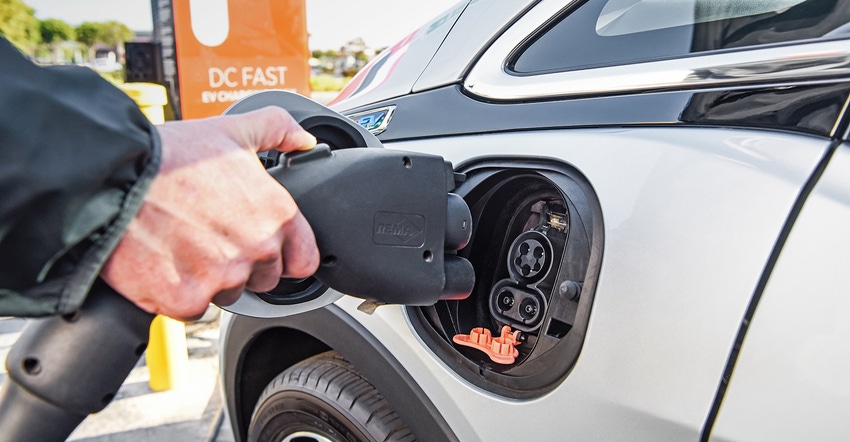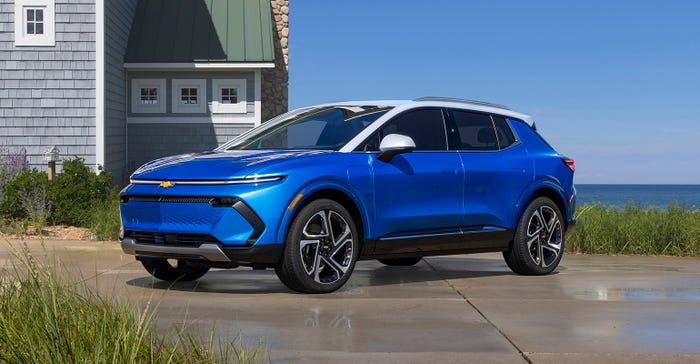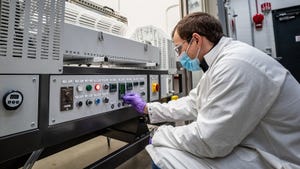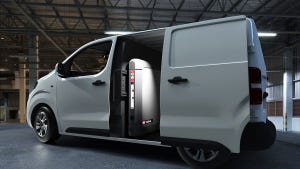GM’s Michael Maten: ‘300 Miles Seems to Be the Magic Number’
GM’s EV Policy and Regulatory Affairs Director discusses EV design, charging infrastructure, and battery chemistry advances that will bring EVs mainstream.

On September 15that the North American Battery Show and EV Tech Expo in Novi, MI, General Motors Corp. EV Policy and Regulatory Affairs Director Michael Maten will be part of a Leaders Roundtable on the topic of Optimizing BEV Design to Meet Range, Performance & Affordability Requirements and Drive Mainstream Adoption of Electric Vehicles. As a prelude to the discussion, Battery Technology spoke with Maten about GM’s perspective on the topic.
What do you think the major impediments to mainstream adoption of EVs have been?
Maten: GM is committed to an all-electric future. Between our current products like the Chevrolet Bolt EV and EUV, Cadillac LYRIQ, and GMC Hummer EV, and products launching next year like the Chevrolet Silverado EV, Equinox EV, and Blazer EV, the flexibility of GM’s Ultium platform will allow us to bring to market electric vehicles at nearly every price point and for every purpose. So, we truly offer EVs for everyone.
We need to ensure that people have a place to plug in their EV, and that they feel comfortable taking longer trips in their EVs. This really speaks to infrastructure, both public fast charging along interstates, but also installing charging at homes, workplaces, and multi-family housing. We’re investing $750M to expand charging infrastructure across North America. As part of this investment, we’re working with Pilot Company to build a coast-to-coast EV charging network that will install 2,000 DC fast chargers at 50-mile intervals across the U.S. We’re also working with EVgo to install 3,250 additional fast chargers in U.S. cities. And we have our Dealer Community Charging Program, which will add up to 40,000 Level 2 chargers in local communities across the U.S. and Canada. Taken in whole, we think these efforts will significantly expand public access to charging across the U.S.
To help customers find and pay for charging, our Ultium Charge 360 network ensures that GM EV drivers have access to more than 100,000 charge points and growing throughout the U.S. and Canada.
For home charging, we’re working to remove that potential hurdle for first-time EV owners by covering standard installation of Level 2 charging outlet for eligible customers who purchase our EVs.
Those are just a few of our efforts on infrastructure. From an industry perspective, we also need to get the Infrastructure Investment and Jobs Act (IIJA)/National Electric Vehicle Infrastructure (NEVI) funding deployed and those charging stations built and operational as soon as possible. This funding is a crucial step in building out a national electric vehicle charging network that can build public confidence, and GM will continue engaging all stakeholders and working collaboratively to support its deployment.
Just what are the perceived minimum requirements for range, performance, and affordability for mainstream acceptance of BEVs?
Maten: We talk to customers all the time and have continued to talk to them over the years as EV interest has increased. We believe that 300 miles seems to be a magic number for many customers in North America. That’s not to say we won’t offer both higher and lower ranges than that, but when we are looking at 100% adoption—“Everybody In”—we need to consider all lifestyles, transport/utility needs, climates, topographies, etc. The good news is that our Ultium system has the capability to flex battery size to meet a wide range of range and vehicle requirements.
Speaking of affordability, we believe our Equinox EV, which we announced last week, available with up to 300 miles of EV range, and starting around $30,000 price, will set a new benchmark in one of the most popular vehicle segments in the U.S.
Finally, it’s not all about range. We know that EVs are really fun to drive, and less costly to maintain, so those are other aspects of the EV experience we like to communicate to consumers.
Can you summarize what GM’s design approach has encompassed to meet range requirements for EVs?
Maten: It all starts with the battery and battery chemistry, looking for the most energy-dense and cost-effective chemistries and formats for our Ultium architecture. The largest opportunities in lightweighting are from higher energy density cells. Further advances in Ultium battery chemistry expected by mid-decade can provide upgrades to our Ultium-fleet thanks to the platform’s capability to accept new battery chemistry without redesigning the packs or vehicles.
GM has completed hundreds of test cycles on the multi-layer prototypes of this next-generation Ultium cell chemistry. Production cells are expected by mid-decade.
These second-generation cells will get closer to cost parity with gas-powered engines due to:
Cell design that enables higher energy density and uses less non-active material, making more room for the part of the battery that produces energy.
Manufacturing efficiencies through GM’s Ultium Cells LLC joint venture with LG Chem.
Better integration between vehicles and their battery packs, enabling fewer cells and modules

Less expensive cathodes, reduced active material, novel electrolytes, and the first use of lithium metal anodes in a GM battery.
Our all-new battery innovation lab and next generation manufacturing technology facility will give us the ability to design and manufacture new types of chemistry, accelerate the development of breakthrough EV technology and lower the cost of key battery components like cathodes.
What has GM’s design approach encompassed to meet performance and affordability requirements for EVs?
Maten: We are taking a modular approach to address a wide variety of body styles and performance parameters. Our Ultium platform, which includes batteries, motors, and drive units, was designed in a way that we can build everything from the Equinox EV to the Hummer EV with maximum commonality of parts and subsystems. We also offer one of the most affordable, long-range EVs available in the U.S. today with the Chevrolet Bolt EV, and we have new vehicles coming at all price points, including the Chevrolet Equinox EV, which was just revealed last week and will start around $30,000.
Can you talk about what GM is doing in the area of sustainability—and the importance of the topic for the company?
Maten: GM has a vision of a world with zero crashes, zero emissions and zero congestion. This has led the company to lay out our plan to be carbon neutral by 2040 in global products and operations and plans to eliminate tailpipe emissions from new vehicles by 2035. Sustainability is at the center of our approach and includes developing materials that involve a less resource-intensive manufacturing process and do not result in as much end-of-life waste; educating employees, supply chain partners and stakeholders about the benefits of sustainable materials and circular economy processes; and creating end-markets for waste and other discarded materials that would otherwise go to landfills or incinerators.
About the Author(s)
You May Also Like





